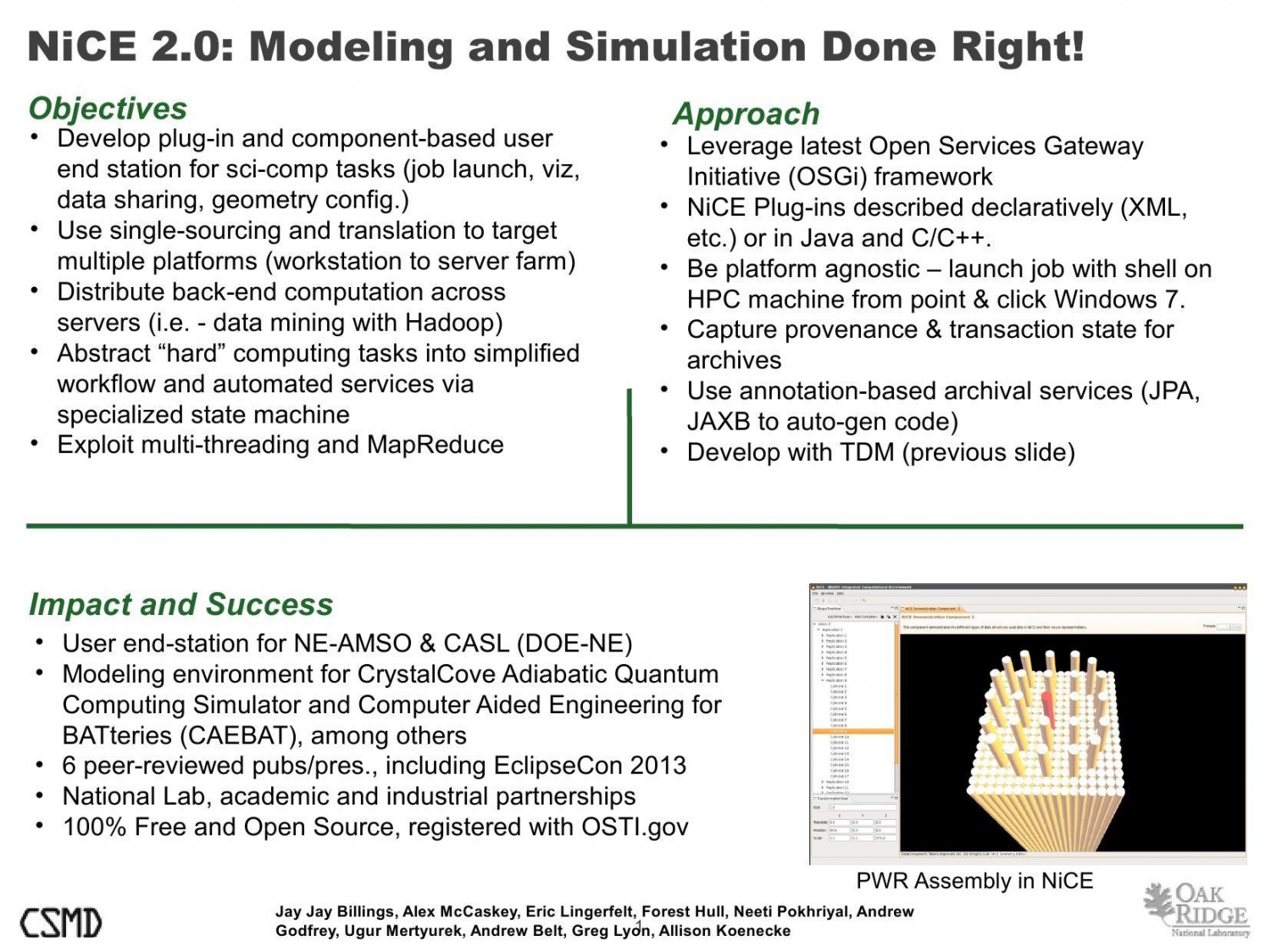Notice: This Wiki is now read only and edits are no longer possible. Please see: https://gitlab.eclipse.org/eclipsefdn/helpdesk/-/wikis/Wiki-shutdown-plan for the plan.
EclipseCon North America 2013 Presentation
This page contains resources for our EclispeCon 2013 presentation, Simulate This! - The Eclipse Platform as an Integrated Computational Environment
The slides are available here.
Abstract
Solving 21st century science problems often requires extremely large simulations of multiple areas of physics, chemistry and applied mathematics on supercomputers. These supercomputers can perform over 10^15 floating point operations per second and a single simulation can produce anywhere from a few to hundreds or even a couple of thousand terabytes of data. Both the machines and the simulations require significant "care and feeding" to produce quality results which can be a very challenging endeavour for both the initiated and the uninitiated. Most of the work to run these simulations is done as it has always been done for decades: by working the shell!
We will present an open-source, Eclipse-based "integrated computational environment" that helps users setup and run simulations on these machines and analyze their data data using the platform that we all know and love, in a seamless, intuitive way. We will discuss why the Eclipse Platform was chosen for this task and why it represents a revolutionary step in usability and productivity in the computational science community. We will share issues and challenges that we have faced with both the Rich Client (desktop) and Rich AJAX Platforms (web), tricks of the trade for building with Eclipse Tycho and the Eclipse Resources Plug-in and the component architecture of our OSGi bundles. We will also discuss the third party libraries that we have integrated for 3D graphics, data management, analysis and post-processing, including jMonkeyEngine, VisIt, HDF5 and Derby (via Eclipse Gemini). We will present the development environment, which is also Eclipsed-based, that is used by the developers for UML modeling, version control, code authoring and testing. Finally, sample simulations will be shared with the audience to demonstrate how the system works and the types of problem solving it enables for batteries, computational fluid dynamics, nuclear energy and quantum computing.
Attendees will leave this presentation with an understanding of the benefits that the Eclipse platform is providing to one small part of the computational science community, at the moment, and also see how it provides great opportunities in the future. Attendees will also gain insight into both the unique challenges of this project and the common ground it shares with other Eclipse-based projects.

Additional Resources for the talk
On Eclipse 4 - More information about what we have done with respect to Eclipse 4 can be found on the migration page.
Gemini is used for persistence in NiCE. More information can be found here on JPA in NiCE.
